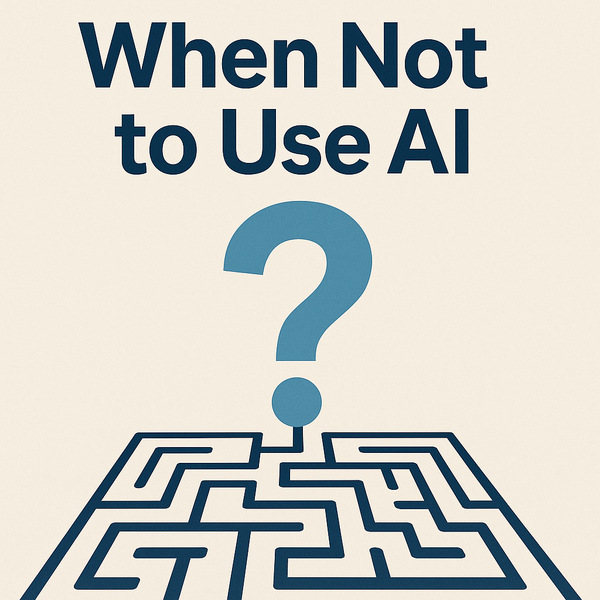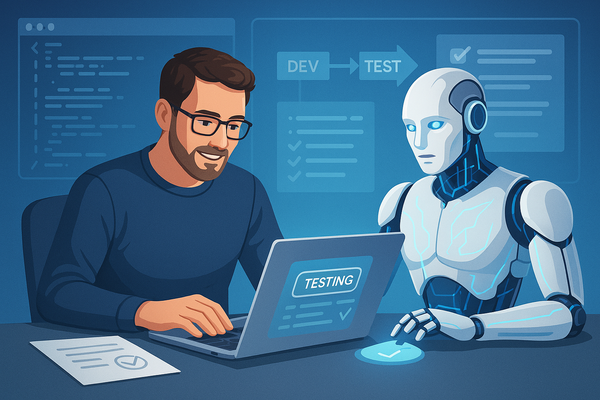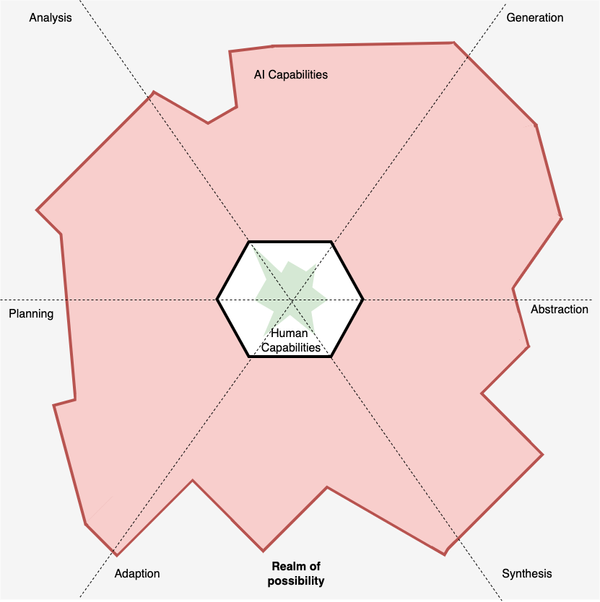How do I become competitive with Generate AI as a tester?
Mindset and experimentation is the key to success with AI

Welcome back to another in a series of posts that follow up on questions I’ve been asked during AMA sessions on the subject of Generative AI and testing. If you want me to discuss Generative AI, testing and Quality engineering with your team, I offer free, one-hour, online ‘Ask me anything’ sessions for teams. Reach out to me on LinkedIn if you want to talk more.
This week’s question is:
As a quality engineer from a service-based industry, how do I become competitive with AI?
Whether we work in a testing services-based role, as consultants or on a product team, I would argue that we’re still figuring out the learning path for using Generative AI in testing. This is unsurprising given the technology is still relatively new and evolving. However, what I can do is share my own experiences around learning and working with Generative AI that helped inform my new book,Software Testing with Generative AI.
Have the right mindset
If we get down to the fundamentals of Generative AI, all it is is another tool in our testing tool belt. Admittedly, it’s a new kind of tool that offers a lot of potential, but in the end, it is just a tool we use to solve specific problems. Therefore, those who are going to be most successful with Gen AI in their career are those who have a healthy mindset towards the use of tools in testing. But what does that healthy mindset look like?
In Software Testing with Generative AI, I cover this in detail, but in a nutshell, we want to take a pragmatic approach to the use of Gen AI tools that is supported by a healthy scepticism around their capabilities. What I mean by this is that:
- We want to be in a position where we understand what Gen AI tools are good at and what they aren’t.
- When using Gen AI tools, we want to keep a watchful eye on whether they are delivering value.
It’s my experience that the people who are most likely to be hired into a role (and be successful in it) are recruited based on their attitude towards tools rather than their knowledge of specific tools. People who can critically assess a context to identify problems that tooling might help with are far more likely to succeed than those who are dogmatic about specific tools. If we want to be successful, then we need to avoid the law of the instruments:
It is tempting, if the only tool you have is a hammer, to treat everything as if it were a nail.
So success is as much about knowing where and when to use Generative AI as it is about developing the techniques to be successful with it in the first place.
Experiment, experiment, experiment
Whilst mindset is one piece of the puzzle, technique is another. To be able to spot when Gen AI can be of use, we need to understand its capabilities, which means getting comfortable with experimenting with Gen AI. Personally, whatever tool I use, I tend to just get stuck in and start having a play with it before doing further reading. But for others, it might be trying out some examples that others have shared.
Gen AI tools are the type of tools that are easy to learn but difficult to master. So, my advice is to not sweat the complicated stuff and focus on getting comfortable with it. Take the time to experiment and see what you can come up with. My first experiment was to see if I could get ChatGPT to generate some example data in SQL. Not to use for a specific project, just to see if I could get it to build some basic statements for me. It’s through experiments like this that we pick up new skills and start to see where such a tool can fit into testing. Here are some example experiments you could try out:
- Generate some test data in a format such as JSON, XML or SQL.
- Try converting some testing notes into a different format. Perhaps a screenshot of a mind map into a testing story.
- Have a Gen AI evaluate a feature or block of code to see what types of risks or information it returns.
By trying out these sample experiments, we start to understand when Gen AI might be of use to us. This means that we can take our experiments to the next level and start thinking about when to use Gen AI in our day-to-day testing (within your company policy, of course).
Learn from others, but be discerning
Of course, learning in a vacuum is not necessarily the best approach to take. So, in conjunction with our experiments, it’s worthwhile taking advantage of the wealth of knowledge others are already sharing around Gen AI. I recommend my book Software Testing with Generative AI, which covers the mindset, technique and context of using Gen AI, but here are some other resources I’ve found useful when putting my book together:
- deeplearning.ai - A great collection of courses around the use of Gen AI.
- huggingface.co - A fantastic community of AI collaborators that provide all sorts of resources and tools.
- learnprompting.org/ - Lots of different types of courses that can be accessed for free around prompting techniques.
This is just a drop in the ocean of the material out there, so I encourage you to do your research. But do keep in mind that not all training material out there is of equal value, and a lot of it can be very shallow (I’m thinking of those prompting PDFs constantly appearing on LinkedIn). Look for material that goes deep into techniques and examples to help guide you in your learning journey.
Conclusion
Sometimes, our fear of new tools can get in the way of our personal development. So, to break through our fear, we need to remind ourselves that tools exist for experimentation just as much for professional use. We should focus on being promiscuous with tools. In the context of Generative AI, this means trying different models such as ChatGPT, Gemini, Anthropic, and more. As well as trying out different exercises and utilising techniques. It’s through experimentation we learn how these tools work. But the secret sauce, so to speak, lies in our understanding of when and where to use them. Honing a critical eye to detect when tools might help is essential to the successful use of any tools. This means not being over-reliant on one specific tool and, when they are implemented, constantly re-evaluating the value of a tool.
If you enjoyed this post and would like me to join your team to discuss Generative AI, testing and quality engineering, I offer free, one-hour, online ‘Ask me anything’ for you and your team. Reach out to me on LinkedIn if you want to talk more.



